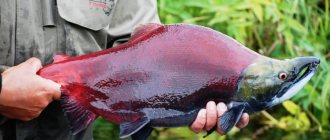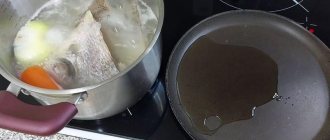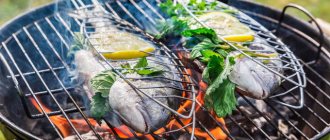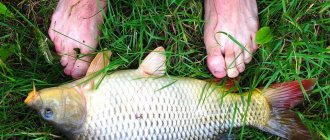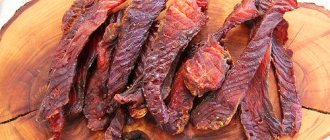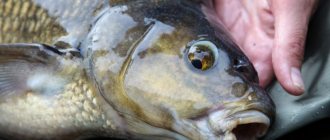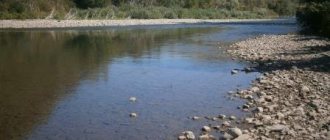The benefits of fish
Fish is a source of high-quality protein and is quickly absorbed by the body.
If it takes about three or four hours to digest the meat, then the fish will “dissolve” in two. Therefore, it is recommended in dietary nutrition even for evening meals. Proteins keep you feeling full for a long time. The brain “gives a signal” not to store anything on the sides or butt. I think many people have heard about the longevity of the people of Japan. They have virtually no problems with the thyroid gland. Excellent vision and smooth skin last until old age. Just look at the photo - cheerful, youthful people. Scientists have found that the cause of health was the consumption of large amounts of sea fish. The composition of your favorite product includes the following benefits:
- fatty amino acids Omega-3, Omega-6;
- vitamins A, D, group B;
- phosphorus;
- zinc;
- iodine;
- calcium.
Regular consumption of seafood reduces the risk of heart disease. The pressure stabilizes. The functioning of the immune system and brain improves. If you don’t want to suffer from dementia in old age, eat fish.
Iodine - saturates the thyroid gland, which has a huge effect on calorie burning and metabolism
Omega-3 fatty acid is a very healthy thing. Without it, the synthesis of other substances in the body is impossible. It maintains normal sensitivity of nerve fibers and participates in muscle contraction. The presence of beneficial Omega-3 acids will have a positive effect on hair, skin, and nails.
What fish can pregnant women eat?
Source: www.depositphotos.com
Fish is a unique product that must be included in the diet of pregnant women. It is a source of valuable protein, essential amino acids, and many useful microelements. It is believed that every pregnant woman should eat 2 servings of fish per week.
Eating fish helps strengthen the bones of the unborn child, helps to avoid vitamin deficiency, and omega-3 fatty acids are necessary for the normal development and functioning of the nervous system. A study by American scientists showed that children born to mothers who ate enough fish and seafood during pregnancy showed higher IQ scores.
Secrets of cooking fish
In order not to spoil the taste of the fish, salting it before cooking is not recommended.
When preparing an appetizer or main course, fill the fish with hot water, using 2 liters of water per kilogram of prepared fish. To ensure uniform cooking, large carcasses are cut into pieces, and small fish are boiled whole.
Be aware that too much water will deteriorate the taste of the fish. Rapid boiling during cooking is also highly undesirable. If possible, use as little cooking water as possible.
Boil sturgeon and catfish in larger pieces, cutting them into portions before serving. These types of fish have a special delicate taste, so try not to use a large amount of spices and seasonings. Preserve its natural taste.
If you are boiling small fish whole, do not put it in very hot water. The temperature difference may cause the skin to burst, and the finished dish will lose its attractiveness. This will also affect the transparency of the broth. Dip the fish, cut into portions, into hot water, and place small fish in boiling water.
From sea fish
- Time: 30 min;
- Number of servings: 5 persons.
- Calorie content of the dish: 37 kcal per 100 g.
- Purpose: for lunch.
- Cuisine: Russian.
- Difficulty: easy.
First courses are not always cooked from pieces of fillet; sometimes they are prepared with minced fish from marine varieties of fish. The main difficulty is to ensure that the tender meatballs do not become overcooked. Chefs have their own secrets; in the presented recipe, the trick is to use breadcrumbs, which “glue” the chopped fillet in rice soup.
- Additional payment to pensions for coal industry workers for harmful activities
- 20 causes of baldness and tips on how to stop it
- Plum compote for the winter recipes for a 3 liter jar
Ingredients:
- minced sea fish – 300 g;
- rice – 1/3 cup;
- egg – 1 pc.;
- garlic – 2 teeth;
- parsley, green onions - 1 bunch each;
- potatoes – 3-4 pcs.;
- onions – 2 pcs.;
- carrots – 1 pc.;
- breadcrumbs - 1 handful;
- salt, ground pepper - to taste.
Cooking method:
- Boil the rice until half cooked.
- Finely chop the onion, garlic and herbs. Mix the listed ingredients with minced meat and egg.
- Salt and pepper the meatball base, form balls, roll them in breadcrumbs.
- Chop the potatoes, onions and carrots.
- Place potatoes, onions, carrots, and meatballs in boiling water.
- After the fish balls are ready, sprinkle the soup with parsley.
Boiled pike perch
Even before cooking, I assumed that this would be a very dietary dish. But my wife insistently asked me to cook more, so I cooked it for everyone. In fact, I can only recommend it to patients on a diet. But for healthy people it’s a little bland. As a result, I ate the pike perch in splendid isolation, I must admit, with pleasure.
Summary:
Already in the hospital I gained additional knowledge about dietary nutrition for gastrointestinal patients. As I assumed, you can only boil or steam non-greasy white fish. This was also shown by my experiment with herring, which I do not regret at all. I will continue to try other types of boiled fish. Bon appetit!!!
What kind of fish is best to cook?
Source: www.depositphotos.com
Dietary fish dishes are very good. For them, the fish needs to be boiled in broth or steamed. Boiled fish is included in special diets for weight loss, baby food, and also in menus for the treatment of various diseases. But there are many other very tasty and healthy dishes for a regular diet.
You can boil pike, pike perch, halibut, whitefish, sole, blue whiting, mackerel, sardinella, sea bass, flounder, mackerel, cod in broth or steam.
Fish with delicate flesh, such as halibut or sole, are best steamed. You can boil tuna, but you only need to simmer it slightly, otherwise it will become tough. Among the fish that are not suitable for cooking are crucian carp, bream, roach, eel, lamprey, sabrefish, navaga, carp and some others. The taste in this case will not be the best. They also don’t boil herring. It gives boiled dishes a specific unpleasant taste. Less tasty when boiled are omul, smelt, and sabrefish. It's better to fry them.
Source: www.depositphotos.com
Duration of boiling fish depending on the type
Each type of fish, as in the case of meat, requires an individual approach. If bream and sturgeon are cooked for equal periods of time, one of the products, and perhaps both, will be hopelessly spoiled. It is better to follow the recommendations of experts on how to properly cook fish, and not do questionable experiments with it:
- Smelt. It should be cooked for no more than 5 minutes. By over-resting the component, there is a risk of getting very tough meat.
- Pollock, mackerel, capelin and catfish reach the desired state in 8-12 minutes.
- To boil pink salmon (and other red fish with a similar texture), trout or pike perch, you will have to spend up to a quarter of an hour.
- Cod, herring, sterlet and flounder are cooked until cooked within 15-20 minutes. Bream and freshwater pike are processed a little longer.
- Hake and salmon are boiled for at least 25-30 minutes. Carp, cut into small pieces, is cooked for the same amount. But a whole carp will cook for about 45 minutes.
- Sturgeon takes the longest to cook. Even cut into portioned pieces, it will be ready within 1-2 hours, depending on the size of the pieces.
Which fish can be used to make the most delicious cutlets?
Source: www.depositphotos.com
Almost any fish is suitable for cutlets. This could be trout, cod, pollock, catfish, pink salmon, pike, pelengas. But it is better to choose large fish, then the cutlets will turn out more juicy. Also, fish should be selected depending on its fat content. If you want to cook juicy and fatty cutlets, then you should buy mackerel, stellate sturgeon, catfish, halibut, herring or horse mackerel. And for a dietary dish, cod, hake, haddock, pollock, and river perch are better suited. The meat in these types is not so fatty.
There are a lot of recipes for delicious fish cutlets. Blue whiting can be used to make cutlets that are crispy on the outside and juicy on the inside. You can also get original fish cutlets by mixing minced fish and carrots with soy sauce.
Basic recommendations for boiling fish
It doesn’t matter whether you need to boil pink salmon or bream, you should always follow the basic rules for working with the component. Only in this case can you count on the fact that in the end everything will turn out tasty and healthy
- It is better not to salt the workpiece and water until the product is ready. Otherwise, the meat will turn out a little dry.
- It is recommended to cook both river and sea fish in a pan without a lid, so you should not use a slow cooker or double boiler to prepare this product.
Tip: Before cooking fish the traditional way, you should consider cooking it in vegetable broth. With this approach, even ordinary bream can be turned into an exquisite delicacy. And if you use saffron in the process of preparing the broth, the finished dish will have an amazing color and subtle aroma.
- The water should not be allowed to boil or bubble strongly, as this can lead to deterioration in the texture of the meat and even destruction of pieces or the carcass.
- Small fish are usually cooked whole, while large ones are cut into pieces. If this is not done, the component will not be welded evenly.
- To save time and make the meat juicy, pieces of fish are placed in boiling water. You can’t do this with small carcasses; temperature changes can cause the skin to burst.
- To boil the product tasty, you need to take a minimum amount of water. An abundance of liquid can greatly deteriorate the quality of the component, especially if you need to boil red fish.
- If within a few minutes after the start of cooking the broth becomes cloudy, the product must be removed and the liquid drained. Re-place the component in fresh boiling water and continue processing.
It is necessary to take special care when boiling representatives of the sturgeon and catfish families. It is better to cut them into large pieces and use a minimum amount of seasonings and spices.
https://youtube.com/watch?v=9Qc_1wQUJIs%3Frel%3D0
How to make fish soup
You can prepare broths from many types of fish. Before cooking, the main component is thoroughly washed, the gills and entrails are removed. Small varieties are cooked whole, while large ones are cut into portions. To improve the taste, cooks use several varieties of fish at once, for example, a combination of burbot and whitefish makes the broth sweetish and tender.
Which fish is best to make soup from?
The secret to making delicious fish soup lies in the right main ingredient. First courses cooked from white varieties are highly valued: flounder, cod, pike perch. Salmon or salmon and trout are also popular for recipes. You can achieve excellent taste by cooking any freshwater or marine species, except for bream, roach, carp and roach, they make the broth bitter.
- Which countries will be the first to open to tourists?
- 8 best gas meters for apartments
- Japanese Chin - standard and characteristics of the breed, color and coat type, education and care at home
Ingredients for fish soup
If the fish soup is prepared from a limited set of products, then the fish soup can be supplemented with several types of vegetables, cereals, and spices. There are recipes that contain flour and wine. Potatoes and rice are the ingredients that go best with fish broth. Spices often include bay leaf, ginger root, rosemary sprigs, and peppercorns.
Cooking fish soup
A traditional Russian dish is ukha, the preparation of which also involves boiling fish. There is nothing complicated in this dish, the main thing is to know how to cook it. You can use different fish. The most delicious is the collected fish soup; large fish are used for it and small fish are used especially for the broth. Small fish do not need to be scaled, but only gutted. The main thing is not to forget to strain the finished broth. For fish soup or fish soup, the head and fins from large fish are often used. The head takes a little longer to cook than the fish itself. It is best to cook the head in a separate pan, and the finished broth should be strained through a sieve or cheesecloth.
Small fish are usually removed from the fish soup, but you can clean it from the bones and rub it through a sieve in the fish soup, then the soup will be even richer and thicker. This type of ear is often called double. It is best to season the soup with black peppercorns, bay leaves and dill.
Research by English scientists
After several years of research, English scientists have proven that those who regularly consume boiled fish instead of fried fish have a 30% reduced risk of developing cardiovascular diseases. Fried fish, which we all love so much, contains carcinogens.
Partial avoidance of fried foods will especially benefit those over 50. Boiled fish contains more polyunsaturated fatty acids, which improve immunity, cleanse blood vessels, and also improve permeability. By eating a small portion of boiled fish every day, each of you can also protect yourself from heart disease. Scientists do not force people to give up fried fish completely, arguing that even partial replacement of fried fish with boiled fish will be beneficial.
How to boil fish
You will need
- onion - 1 head;
- carrots - 1 piece;
- parsley root - 1 piece;
- vinegar 3% - 1 tablespoon or juice of half a lemon;
- black peppercorns
- Bay leaf
- salt;
- fresh greens.
Instructions
Fill small fish and heads with fins with water and cook. As soon as the water boils, skim off the foam and reduce the heat so that there are no obvious signs of boiling. Simmer the fish broth for half an hour, then strain it. Squeeze the remaining fish, along with bones and scales, into the broth through cheesecloth, discard everything else and return the broth to simmer on the stove.
Cut large fish into portions, leave medium-sized fish into small carcasses. Peel the carrots, onions, and parsley root. Chop the onion finely, carrots and parsley root into small cubes. Place them in boiling broth or water if you did not cook small fish separately.
Probably each of us loves boiled fish dishes. It is not only tasty, tender, aromatic and healthy, but also ideal for dietary nutrition.
You will need
- Bay leaf
- salt
- black peppercorns
- parsley roots.
Instructions
Pour some cold water into the pan, put the fish in it and put it on high heat. When boiling, the fire must be reduced.
note
There is no need to cook the fish for a long time; it will become tough and tasteless. You should not put fish in boiling water, as it may burst; it is better to put it in warm water. When choosing fish, you need to pay special attention to freshness. In this case, the gills should be red, the eyes and scales should be clean and shiny.
Helpful advice
When cooking fish, you should not pour a lot of water; the less, the tastier it will be. If you want to retain more nutrients in the finished fish, it is better to steam it. Do not pour out the broth; it will be quite useful for making fish soup or sauce. To clean the scales well, immerse the fish in hot water for 1-2 minutes.
www.kakprosto.ru
From frozen fish
- Time: 50 min.
- Number of servings: 8 persons.
- Calorie content of the dish: 45 kcal per 100 g.
- Purpose: for lunch.
- Cuisine: Russian.
- Difficulty: easy.
If you are pretty tired of the classic rassolnik with pearl barley from Russian cuisine, try its unusual version - fish. Fish soup can be cooked from frozen products, preferably sea varieties. Sea bass, mackerel are suitable, you can take bellies, backs or fillets of salmon. Fish broths are absorbed better than mushroom dressing soups and meat broths.
Ingredients:
- fish – 0.5 kg;
- water – 3 l;
- pearl barley (boiled until half cooked) – 250 g;
- potato tubers – 5 pcs.;
- onion – 1 pc.;
- pickled cucumbers – 3 pcs.;
- tomato paste (you can use tomato puree) – 1 tbsp. l.;
- spices - to taste;
- vegetable oil - for frying.
Cooking method:
- Pour water over the defrosted fish and put on fire, bring to a boil, add salt and pepper.
- Peel and chop the vegetables.
- Remove the fish and add potatoes and boneless fish slices to the prepared broth.
- Fry onions, carrots, add cucumbers, pour in tomato sauce.
- Place the browned barley and barley into the soup; when the potatoes are cooked, add herbs and spices.
How long to cook fish
Like any seafood, fish does not tolerate prolonged heat treatment. It becomes tough, loses its taste and attractive appearance.
The cooking time for fish depends on its type and the size of the pieces:
- portioned pieces of sturgeon are boiled for 1 to 2 hours;
- the carp is cooked for 45 minutes, and if you cut it into pieces - 25-30 minutes;
- hake - 25-35 minutes;
- boil the salmon for 25-30 minutes;
- freshwater predatory pike is cooked for 20-25 minutes;
- flounder, cod, sterlet and herring will be ready after 15-20 minutes of cooking;
- pike perch, pink salmon and trout cook very quickly - 10-15 minutes is enough;
- catfish and capelin are even faster - 10-12 minutes;
- pollock and mackerel - only 5-10 minutes;
- and the record holder for the fastest cooking time is smelt fish: 5 minutes is enough for it to be ready.
What can you cook
You can prepare various dishes from boiled fish. Don’t be afraid to experiment, because, having a certain neutral taste, fish can easily be combined with many foods: vegetables and flour products. If you decide to serve boiled fish as an independent product, then to add juiciness, it is recommended to use onion frying based on olive oil.
Some housewives even prefer to cook fish in oil, which ultimately resembles canned fish, but do not forget that such a dish is considered high-calorie. If you need to prepare a fairly satisfying and less calorie dish, we recommend using Polish sauce.
Procedure for cooking fish
To cook fish, it is gutted, cleaned of entrails and scales, gills are removed, cut into pieces and dipped in boiling water (to which salt and various seasonings are added in advance). The broth is brought to a boil again, and then the heat is reduced so that the liquid barely boils. Why does fish need to be salted right away? Adding salt prevents the product from boiling too quickly. An exception to the rule about adding salt is when boiling sturgeon with dense flesh: this fish does not boil over, but can lose too many nutrients in salt water. Thus, when boiling sterlet and large sturgeon, they are salted at the end of the process.
The cleaning process can be avoided if you buy already gutted specimens or fillets. Many people prefer to cook the fish under the lid in a small amount of water, which covers the pieces of fish only halfway - simmer. If the taste of the fish itself is not very rich, it can be improved by boiling it in vegetable or even chicken broth, in milk or in water diluted in half with milk. To improve the taste, you can add carrots, parsley and celery roots, and onions to the water. An alternative option is to add a little cucumber pickle, a little dill or fresh sweet pepper to the water. Bay leaves and pepper are added only to fish whose natural smell is not liked by the cook.
Steaming retains more nutrients and flavor in the fish. For fillets, it is highly recommended, since the skin does not protect it from the aggressive external environment. If you have not yet purchased a double boiler, then you can take a regular saucepan, pour a little water into it (about a 5 cm layer), bring to a boil, put a colander on top, put fish in it, salted and sprinkled with your favorite spices, cover the colander with a lid and wait end of the process.
If the taste of boiled fish seems boring to you, and you don’t have enough enthusiasm for experimenting with broth and seasonings, the ready-to-eat product can be supplemented with both store-bought and.
The nuances of boiling fish
Of course, when boiling bream, mackerel or some delicious type of fish, there are specific features and recommendations, but there are general nuances for preparing a boiled product:
- Products with a delicate, unexpressed taste are not recommended to be richly flavored with seasonings and spices. It is enough to put white roots (parsley, celery) into the broth and add salt to the finished dish.
- But bream, carp or silver carp should be seasoned with pepper, bay leaf, carrots and onions. The already rich taste of meat will become more spicy and pronounced.
- Fish that initially has an unpleasant odor can be saved with cucumber brine. Just add a little liquid to the broth during the cooking process.
- If for some reason the finished product does not need to be served yet, it can be left in the broth, however, no more than half an hour.
The broth remaining after cooking the products can be strained several times until transparent, frozen and later used in making sauces. Just before pouring it into molds, you should add a little salt to the liquid.
https://youtube.com/watch?v=z703sIrBO1g%3Frel%3D0
General recommendations
There is no clear technology for preparing boiled fish. And it is almost impossible to say how this is done correctly. Each housewife has her own cooking secrets: some use a mesh for this, others resort to a double boiler, and still others try to find a middle ground during cooking that allows them to avoid overcooking.
But we cannot ignore the basic requirement for the quality of the product: the fish must boil at least a little (for this it is better to use low heat).
It is necessary to plan your actions in the process of preparing the dish in question, starting from the desired end result (you are planning to make a casserole, separating the bones during boiling, you are pursuing the goal of getting a boiled fillet for a salad, or you need whole pieces of fish for dinner). If you still need whole pieces of boiled fish, then it is quite acceptable to put the fish in cold water. The main thing is that the fish is cut into fairly large pieces.
It is not recommended to cook small fish in this way, as they will begin to fall apart as soon as the water starts to heat up.
As for the amount of water, it should lightly cover the fish so as not to provoke preliminary boiling (a small amount of water provides the fish pieces with “rest”, due to this it is possible to avoid unnecessary deformation). Thus, it is possible to cook fish even with gills. But in the case of fish soup, this method will be unacceptable, and the gills will be superfluous. Here we immerse the fish either at the end of cooking or at the very beginning, but after boiling it a little, it will be necessary to completely remove it from the future broth so that it does not completely spread out.
Fish selection
Freshness of food is, of course, always important, but in the case of fish this rule doubles its strength. Any fish, if it is fresh, should not have an unpleasant odor, and the eyes should be bright, without clouding. The meat should be firm and not separated from the bones, and the gills should be pink. If you have not had the chance to catch red fish yourself and you choose it at the market, then keep in mind that fresh red fish should have pink mucus on its scales. The inside of the meat should be pink and without bruising. In addition to the above, it is worth considering that some fish are not entirely suitable for cooking. for example, you can cook it, but most likely the meat will fall apart.
List of the most delicious fish for frying without bones
If you go into a large fish department, your eyes will run wild at the names. In addition to those species that are clearly well-known, there are probably some that we have never heard of before.
In order not to make a mistake with your choice, remember the fish that never has bones in its meat:
- burbot (belongs to the cod class);
- eel (found in sea water);
- river lamprey;
- catfish;
- halibut;
- sole;
- sea bass;
- mullet;
- white pike;
- catfish;
- lakedra;
- Vomer;
- Far Eastern navaga;
- macrorus;
- haddock.
Like any other fish, boneless fish saturates the body with linoleic and arachidonic fatty amino acids (Omega 3 and Omega 6). These substances are necessary for normal brain function, help reduce cholesterol levels and are involved in the construction of cell membranes. Therefore, nutritionists not only advise, but insist that fish dishes be included in the daily diet, especially for those who are engaged in intellectual work: students, schoolchildren and adults.
Attention!
Fish meat is rich in protein and also contains phosphorus, iodine, vitamins B and D.
